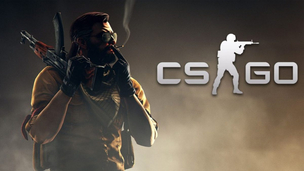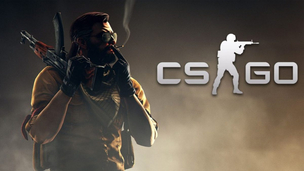The Future of Skin Trading
In recent years, the world of video gaming has seen a remarkable rise in the phenomenon of skin trading. This practice, which involves the buying, selling, and trading of cosmetic in-game items, has become a lucrative industry with a dedicated following of avid gamers. However, as with any emerging trend, questions arise about the future direction of skin trading. This article aims to explore the various aspects of skin trading and provide insights into its potential future developments.
Understanding Skin Trading
Skin trading refers to the process of exchanging virtual cosmetic items, commonly known as "skins," within video games. These skins can range from weapon camouflages, character outfits, to visual modifications for in-game objects. Video game players who are looking for skin trading sites can visit SkinMarkets, While skins do not impact gameplay itself, they allow players to personalize their gaming experience and display their unique style in the virtual world to see the best trading sites available.
The History of Skin Trading
Before delving into the future of skin trading, it is essential to understand its origins. Skin trading first gained prominence within the world of PC gaming, particularly with the advent of Valve Corporation's popular game, Counter-Strike: Global Offensive (CS:GO), and its Steam Community Market. This marketplace allowed players to buy, sell, and trade skins with each other, sparking a new era of virtual item exchange.
The concept of skin trading can be traced back to the early days of online gaming. As multiplayer games became more popular, players sought ways to stand out from the crowd and express their individuality within the virtual realms. This desire for uniqueness gave rise to the creation of cosmetic items that could be acquired and traded among players.
However, it was not until the introduction of CS:GO and its innovative Steam Community Market that skin trading truly took off. The game's developers recognized the demand for cosmetic items and provided players with a platform to trade their skins easily. This move revolutionized the gaming industry and paved the way for the widespread adoption of skin trading in other games.
With the success of CS:GO's skin trading system, other game developers quickly followed suit. Popular titles such as Dota 2, Team Fortress 2, and PlayerUnknown's Battlegrounds (PUBG) introduced their own skin trading platforms, allowing players to engage in virtual item exchange within their respective games.
The Impact of Skin Trading
While skin trading may seem like a trivial aspect of gaming, its impact extends far beyond mere cosmetic enhancements. Skin trading has created a thriving economy within the gaming community, with skins often being bought and sold for real-world currency. This has led to the emergence of skin marketplaces, where players can trade their skins for profit or acquire rare and valuable items.
Moreover, skin trading has fostered a sense of community among gamers. The ability to trade and interact with other players on a virtual marketplace has created a social aspect to gaming that goes beyond the confines of the game itself. Players can connect with like-minded individuals, discuss strategies, and engage in friendly banter while trading their prized skins.
Looking Ahead
The future of skin trading looks promising, with advancements in technology and the growing popularity of eSports. As virtual reality and augmented reality continue to evolve, skin trading could become an even more immersive and interactive experience. Imagine being able to see and inspect a skin in virtual reality before making a trade, or showcasing your collection of rare skins in augmented reality.
Furthermore, the rise of eSports has brought skin trading to the forefront of competitive gaming. In-game tournaments and events often feature exclusive skins as rewards, further fueling the demand for rare and valuable items. As the eSports industry continues to grow, skin trading will likely play an even more significant role in the gaming ecosystem.
In conclusion, skin trading has become an integral part of the gaming experience, allowing players to express their individuality and engage in a vibrant virtual economy. From its humble beginnings in CS:GO to its widespread adoption across various games, skin trading has transformed the way we perceive and interact with virtual cosmetic items. As technology advances and the gaming industry evolves, the future of skin trading holds exciting possibilities for both players and developers alike.
The Current State of Skin Trading
As skin trading continues to evolve, several platforms have emerged as central hubs for enthusiasts to engage in these transactions.
-
Popular Platforms for Skin Trading
-
One of the most prominent platforms is CS:GO Lounge, a website that facilitates the trading of skins for the CS:GO community. CS:GO Lounge has gained a massive following, with millions of users actively participating in skin trading. The website's user-friendly interface and extensive inventory make it a preferred choice for many traders. Furthermore, CS:GO Lounge provides a platform for users to discuss and negotiate trades, fostering a sense of community among skin traders.
In addition to CS:GO Lounge, other third-party websites have also gained popularity in the skin trading scene. OPskins, for example, offers a wide range of skins for various games, making it a go-to platform for gamers looking to expand their collections. With its secure payment system and efficient trading process, OPskins has become a trusted platform among skin traders. Similarly, Bitskins has established itself as a reliable marketplace, offering competitive prices and a vast selection of skins.The Economics of Skin Trading
Beyond a mere cosmetic pursuit, skin trading has become a legitimate economy within the gaming community. The demand for rare and sought-after skins has created a thriving market where prices can reach staggering figures. Some skins have sold for thousands of dollars, attracting both serious collectors and opportunistic traders looking to make a profit.
The economic aspect of skin trading has sparked debates on the ethics and impact of virtual item trading. Critics argue that it promotes gambling-like behavior, as users can spend significant amounts of money on virtual items with uncertain returns. On the other hand, proponents argue that skin trading provides an avenue for creativity and self-expression within the gaming community. They believe that the market value assigned to skins reflects their rarity and desirability, creating a dynamic and engaging ecosystem.
Furthermore, the economic impact of skin trading extends beyond individual traders. Some professional esports teams and organizations have capitalized on the popularity of skin trading by partnering with sponsors and creating their own branded skins. This collaboration between the gaming industry and skin trading has led to increased revenue streams and further integration of skins into the gaming experience.
The Impact of Skin Trading
Skin trading has had a profound impact on gaming culture and the attitudes of players.
The Influence on Gaming Culture
The rise of skin trading has not only changed how players engage with games but also influenced the overall gaming culture. Skins have become a form of social currency, with players showcasing their collections and using them to symbolize status. This trend has fostered unique communities and forums centered around skin trading, further blurring the line between virtual possessions and real-world identity.
Legal and Ethical Implications
On the legal front, skin trading has raised concerns regarding copyright infringement and intellectual property rights. Some skins are designed by members of the gaming community themselves, leading to debates over ownership and compensation. Ethically, questions about underage gambling and addiction have surfaced due to the integration of skin trading with betting and gambling websites.
Future Trends in Skin Trading
Considering the rapid evolution of technology and the ever-changing gaming landscape, skin trading is poised to undergo significant developments in the future.
Technological Advancements and Their Impact
Advancements in virtual reality (VR) and augmented reality (AR) could revolutionize how players interact with skins. Imagine being able to visualize and try out skins in a virtual showroom before making a purchase. Additionally, blockchain technology has the potential to enhance transparency and security within skin trading, mitigating concerns such as counterfeit items and fraud.
Predicted Market Changes
Experts predict that the skin trading market will continue to grow exponentially in the coming years. With an increasing number of games embracing skin trading as a legitimate part of their ecosystems, the demand for skins is expected to rise. Furthermore, the integration of skin trading into mobile gaming platforms may attract an even broader audience.
The Role of Cryptocurrency in Skin Trading
Cryptocurrency, such as Bitcoin and Ethereum, has started making waves in the world of skin trading.
Current Use of Cryptocurrency in Skin Trading
Some skin trading platforms have begun accepting cryptocurrency as a means of transaction. This enables users to trade skins using cryptocurrency and provides an alternative avenue for liquidity. Cryptocurrency's decentralized nature also offers potential solutions for issues related to cross-border transactions and conversion fees.
Future Possibilities for Cryptocurrency in Skin Trading
The integration of blockchain technology and cryptocurrency could enable the creation of unique and limited-edition skins with provable scarcity. This would introduce an entirely new dimension to skin trading, where ownership and rarity are precisely defined and tracked on the blockchain.
In conclusion, the future of skin trading holds immense potential for innovation and growth. With advancements in technology, changes in market dynamics, and the integration of cryptocurrency, skin trading is poised to shape the gaming industry in ways we have yet to fully comprehend. As the demand for self-expression and personalization continues to increase within the gaming community, skin trading is set to evolve and establish itself as an integral part of the gaming experience.
To read the latest guides, news, and features you can visit our Counter-Strike: Global Offensive Game Page.





